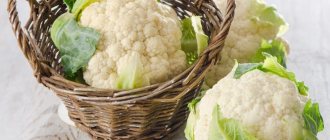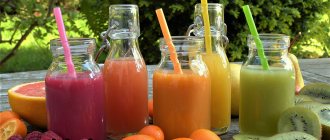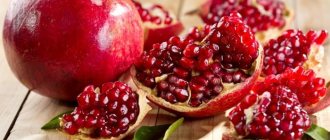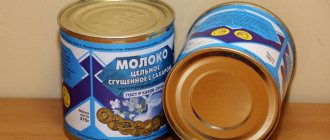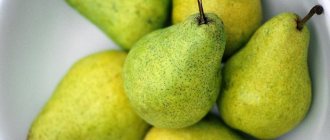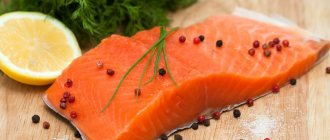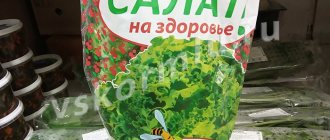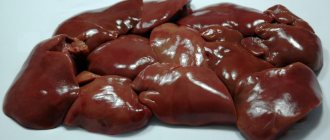With each month after childbirth, the diet of a nursing mother expands significantly. One of its main components is the first courses.
Many women during lactation are interested in whether it is possible to eat cabbage soup made from fresh or sauerkraut, in particular when the baby is still a newborn, or whether it is better to include the product in your menu later.
We will talk about this, as well as other nuances of eating this healthy, but ambiguous dish during breastfeeding, as well as how to correctly introduce it into a mother’s diet in this article.
Is it possible to eat them during breastfeeding?
Shchi is the general name for an entire category of first courses. They are prepared with fresh or sauerkraut, sorrel or nettle.
Only one thing remains unchanged - this nourishing and aromatic liquid dish can be present in the diet of a nursing woman, because it has a beneficial effect on her body as a whole.
When to include in the diet?
In order not to harm the body of the mother and child, cabbage soup, like any other food product, must be included in the menu gradually and with great care . Breastfeeding experts recommend doing it this way:
- A young mother can consume green sorrel cabbage soup for the first time three months after giving birth.
- The first dish of nettle can be included in the diet a month after the birth of the child. This amazing plant not only increases lactation, but also helps the female body recover more quickly after childbirth.
- You can diversify your menu with fresh cabbage dishes already 2 - 3 months after giving birth.
- It is not recommended to include sauerkraut in a nursing woman’s diet too early. Pediatricians recommend postponing their use by the mother until the baby is 6 to 8 months old.
During the first month after birth, a young mother breastfeeding a newborn baby is not recommended to eat this food in any form. You can diversify your diet with them only 30 days after the birth of the child.
Benefits for the mother
Cabbage soup of any kind will bring invaluable benefits to the female body:
- stimulation of intestinal function;
- saturating the body with useful microelements and vitamins;
- increased lactation;
- elimination of anemia;
- acceleration of the recovery process after childbirth;
- quickly saturate the body in the absence of extra calories.
This dish of nettle and sorrel has a beneficial effect on the cardiovascular system of the body. And low-calorie cabbage-based first courses help regulate metabolism and help get rid of excess weight.
Borscht while breastfeeding
Borscht is a tasty, nutritious and healthy dish in which the proportions of proteins, fats and carbohydrates are ideally observed, which ensures the normal functioning of the body. The vegetables included in the composition contain a large range of vitamins and minerals, and are also an excellent sorbent and remove toxic substances. Fiber helps cleanse the intestinal walls, improves its microflora, stimulates the growth of beneficial microorganisms that produce up to 50% of the daily dose of B vitamins. Borscht cooked in meat broth saturates the body for a long period of time. Despite the benefits of this dish, doctors advise introducing it into the menu of a nursing mother carefully to avoid negative reactions in a child whose body is not yet strong enough.
Borscht is a dish of Slavic cuisine, a type of soup based on beets, which gives it its characteristic red color.
Possible problems for the child
To prepare borscht, beef or pork is usually used. The meat broth turns out to be fatty, and it will be difficult for the baby to breastfeed. Other components of the dish may not be well accepted by the child’s fragile digestive system.
Colic
Cabbage and beets contain large amounts of coarse fiber. It can irritate the delicate mucous membrane of the stomach, and also cause flatulence, pain in the intestines and problems with stool.
According to doctors, functional digestive disorders in the form of colic occur in 30% of infants.
Video: why baby colic occurs
Allergy to borscht ingredients
Beets, tomato paste, tomatoes and spices are strong allergens. If a nursing woman knows that her child suffers from allergies, then there is no need to rush to introduce red foods into her menu.
Introduction to a child's diet
First courses should be the basis of nutrition for young children. They help the growing body get all the necessary nutrients without overloading the digestive system. For this reason, pediatricians strongly recommend including cabbage soup of various types in children's menus.
From what age?
In order not to harm a small growing organism, first courses must be introduced into its diet in accordance with the age recommendations of specialists.
Recommendations for inclusion in the diet:
- Cabbage soup made from fresh cabbage can be given to children aged 10 months. But the first dish prepared with sauerkraut is recommended to be included in the diet no earlier than the baby turns three years old.
- Food prepared with sorrel can be included in a child’s menu only after he reaches one and a half years of age. At an earlier age, its use can cause serious harm to the growing body.
- Nettle cabbage soup can be included in the menu of 3 year old children.
Compliance with age restrictions will avoid negative consequences and provide the opportunity to get the maximum benefit from eating these first courses.
Benefits for the baby
Timely introduction of cabbage soup into your baby’s diet will allow:
- improve the functioning of the gastrointestinal tract;
- enrich the menu with healthy vitamins and microelements;
- increase immunity;
- instill proper eating habits.
In the future, consumption of such first courses will have a beneficial effect on the overall growth and development of the child and his health.
Recipe for cabbage soup for a nursing mother
Required Ingredients
- Water -2 l;
- Lean meat – 400 g;
- Cabbage – 200 g;
- Potatoes -2 – 3 pcs.;
- Carrots – 1 pc.;
- Onions – 1 pc.;
- Tomato - 1 pc.;
- Parsley -5 g;
- Dill – 5 g;
- Vegetable oil -2 tbsp;
- Salt to taste -2 tbsp.
Cooking process
- Place the meat in a saucepan with water and bring to a boil.
- Change the water.
- Boil the broth until the meat is cooked.
- Salt the broth.
- Peel and finely chop the vegetables.
- Place potatoes and cabbage in the broth and cook.
- Fry carrots and onions separately in vegetable oil.
- Add peeled and chopped tomatoes to this dressing.
- When the dressing is ready, add it to the soup.
- Finely chop the dill and parsley and add to the cabbage soup.
- Bring to a boil and turn off the stove.
- Leave to infuse for 10 - 15 minutes under the lid on the stove.
Cabbage soup made from fresh cabbage during breastfeeding is beneficial for the health of mother and baby. They contain a large amount of vitamins that help the child to fully grow and develop. Using only natural and healthy ingredients, this soup will help strengthen the immune system and establish a normal digestion process.
Possible danger
Negative effects on maternal and child organisms can manifest themselves in the following:
- The occurrence of an allergic reaction to this multi-component dish.
- The appearance of digestive problems in both mother and baby, especially after eating cabbage soup.
- Intoxication of the body due to the use of low-quality vegetables collected or purchased in inappropriate places.
- A large load on the digestive tract of a woman and child due to eating too fatty first courses.
All these potentially dangerous consequences can be eliminated if:
- introduce new first courses into the diet gradually;
- cook cabbage soup in accordance with the cooking technology and recommendations of pediatricians and breastfeeding consultants;
- cook the dish in low-fat broth or water with minimal use of fat;
- collect greens or purchase vegetables away from urban industry and only in specialized greenhouses or stores.
With this approach to the preparation and consumption of this first dish, it does not pose any danger to either the woman’s body or the child’s body.
The composition of cabbage soup and its effect on the body of the baby and nursing mother
A traditional cabbage soup recipe uses the following ingredients:
- Meat . Animal protein is necessary for the body of a nursing mother and her baby. However, it is healthier to choose low-fat varieties, such as rabbit, chicken, veal, and beef.
- Cabbage . It can cause increased gas formation in both women and infants. You should boil the cabbage, then the likelihood of intestinal problems will be minimized.
- Potato . Allowed and healthy vegetable during breastfeeding. Contains many vitamins and microelements that are easily absorbed by the body.
- Carrot . Known for its high content of vitamin A. A necessary vegetable during lactation, but provided there are no allergic manifestations in the baby.
- Onion . It is contraindicated in large quantities, as it can cause pain in the stomach and intestines. In addition, there is an opinion that onions change the taste of milk, which the baby may not like. However, in moderate doses, onions are even useful during lactation, as they are an assistant in the prevention and control of viral diseases.
- Tomatoes . If your baby has previously had allergic reactions to this vegetable, cabbage soup can be prepared without them.
- Parsley . In terms of its composition, it beats many vegetables. It has a particularly high content of vitamins A and C, which is useful for strengthening the immune defense of mother and child, and vitamin K, which helps calcium to be better absorbed.
- Dill . An excellent assistant in the fight against many diseases, including colic in infants. In addition, it enhances breast milk production.
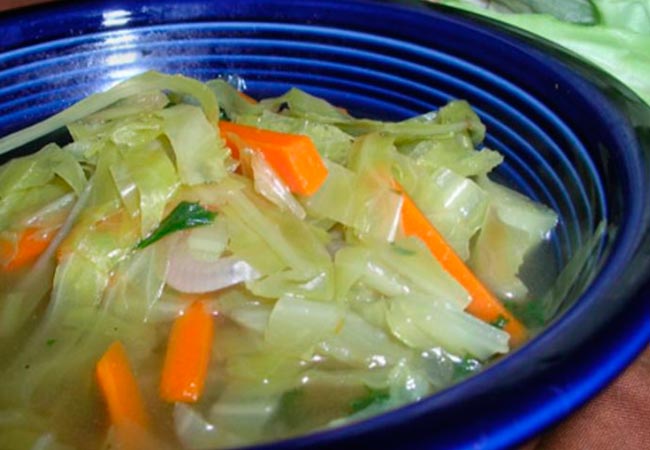
White cabbage during breastfeeding
When breastfeeding, do not rush to introduce raw vegetables into your diet. Start eating stewed cabbage, you can cook “weak” cabbage soup. Wait until your baby is 4 weeks old and only then add “forbidden” foods to your menu. Some pediatricians advise waiting until 3 months of age. Portions of stew or cabbage soup should be small. Carefully monitor your baby's behavior after feeding. If he gets restless, burps, or has a bloated tummy, don't rush into adding cabbage to his diet.
If you add cumin to a plate of sauerkraut, it will not cause discomfort or bloating.
The raw vegetable can be eaten in the fourth month of feeding. Mom should abstain from sauerkraut for up to six months. It is rich in folic acid, vitamin C and is beneficial for the body as a whole. But you need to start with small portions, because it provokes bloating and gas formation. There is one secret that reduces discomfort after eating this dish. A pinch of cumin added to a serving of sauerkraut reduces subsequent bloating.
Green borscht during breastfeeding
Green borscht is usually prepared with the addition of sorrel. This herb has a moderately sour taste, lowers cholesterol levels, removes radionuclides from the body, and has a positive effect on intestinal motility. Sorrel is not recommended for use by women who suffer from diseases of the genitourinary system, gastrointestinal tract, water-salt balance disorders, or have kidney stones.
It should be borne in mind that the plant contains oxalic acid, which provokes the formation of kidney stones. There is especially a lot of it in old shoots. To neutralize oxalic acid, add low-fat sour cream or yogurt to the finished dish.
Fermented milk products contain calcium, which neutralizes oxalic acid, forming calcium salts that are harmless to health.
Boil the sorrel for 2–3 minutes, during which it changes color from dark to lighter. In most cases, the herb does not cause allergic reactions, but there is always the possibility of individual intolerance.
Pediatricians say that soup with the addition of sorrel will not harm the baby and a nursing woman can consume it 3-4 months after childbirth, but no more than 1 serving per day.
Pediatricians allow a nursing mother to consume borscht already in the third month after childbirth. It is worth remembering that the dish contains a large number of components that can cause undesirable consequences for the baby. Therefore, it should be introduced into the diet carefully.
Concerned about the health of the baby, young mothers are always interested in what foods can be consumed during breastfeeding. A nursing woman often hears a lot of advice and contraindications regarding the use of a particular product. Pediatricians from around the world cannot agree. One side is sure that all nutrients are transferred to the baby with the milk of a nursing mother. Other doctors claim that the baby’s nutrition does not depend on the mother’s diet.
There is no need to worry about your diet while breastfeeding only if the baby does not feel any discomfort or pain. In case of stool disturbances, colic and increased gas formation, the mother needs to pay attention to her menu. Excessive consumption of fresh cabbage or dishes prepared from this vegetable (cabbage soup, salads, sauerkraut, stew), according to many doctors, can be considered the cause of colic in a baby. This opinion is not fully justified from a medical point of view; the causes of colic in a baby during breastfeeding can be completely different.
